For the first time in Singapore, there is a large scale Korean exhibition in Singapore. Held at the Asian Civilisations Museum, the exhibition on Joseon has over 150 artefacts and treasures on loan from the National Museum of Korea and the National Palace Museum of Korea.
The exhibition covers the Joseon dynasty, familiar to K drama and movie lovers as many saeguk shows are based during that period- ‘Queen In-Hyun’s Man’, ‘The Moon that Embraces the Sun’, ‘Hong Gil Dong’, ‘Hwang Ji Ni’, ‘Untold Scandal’, ‘The King and the Clown’ and perhaps one of the most well known in recent drama history- ‘Love in the Moonlight’.
The Neo-Confucianism adopted by the kings had much influence on the court and the politics, filtering it’s way down to the common people and their way of life.
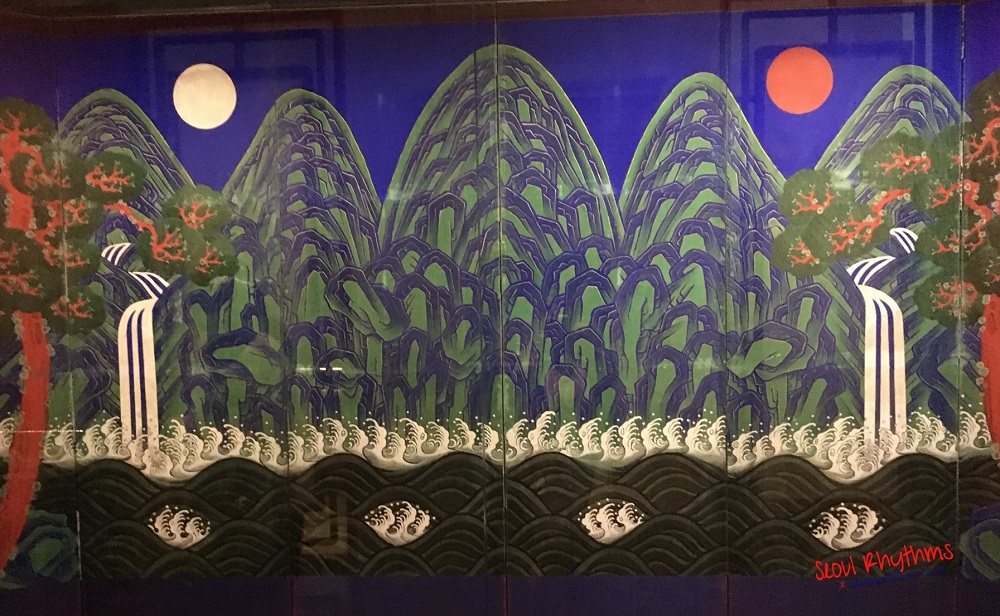 The above screen greets you at the entrance to the exhibition. If it looks familiar, it’s because this folding screen featuring the sun, moon and five peaks was placed behind the throne or royal portrait of the king.
The above screen greets you at the entrance to the exhibition. If it looks familiar, it’s because this folding screen featuring the sun, moon and five peaks was placed behind the throne or royal portrait of the king.
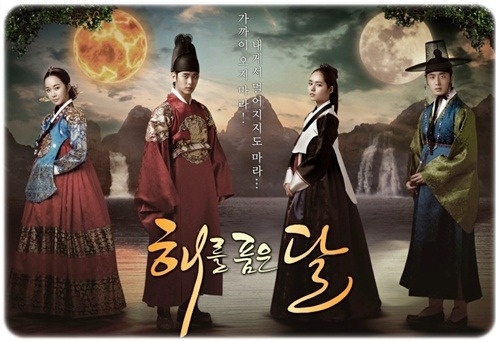 Looks familiar?
Looks familiar?
The exhibition has many intricately drawn paintings that depict the palace life as well as the daily lives of the common people. The following two were painted during the celebrations of a Queen’s Mother’s birthday. They are similar, but not the same. Can you spot the difference? Answer at the bottom this post.
Fun fact: Do you know that the emperor cannot be painted? So the only way to know that the emperor is present in the painting is the folding screen as it is placed behind the throne.
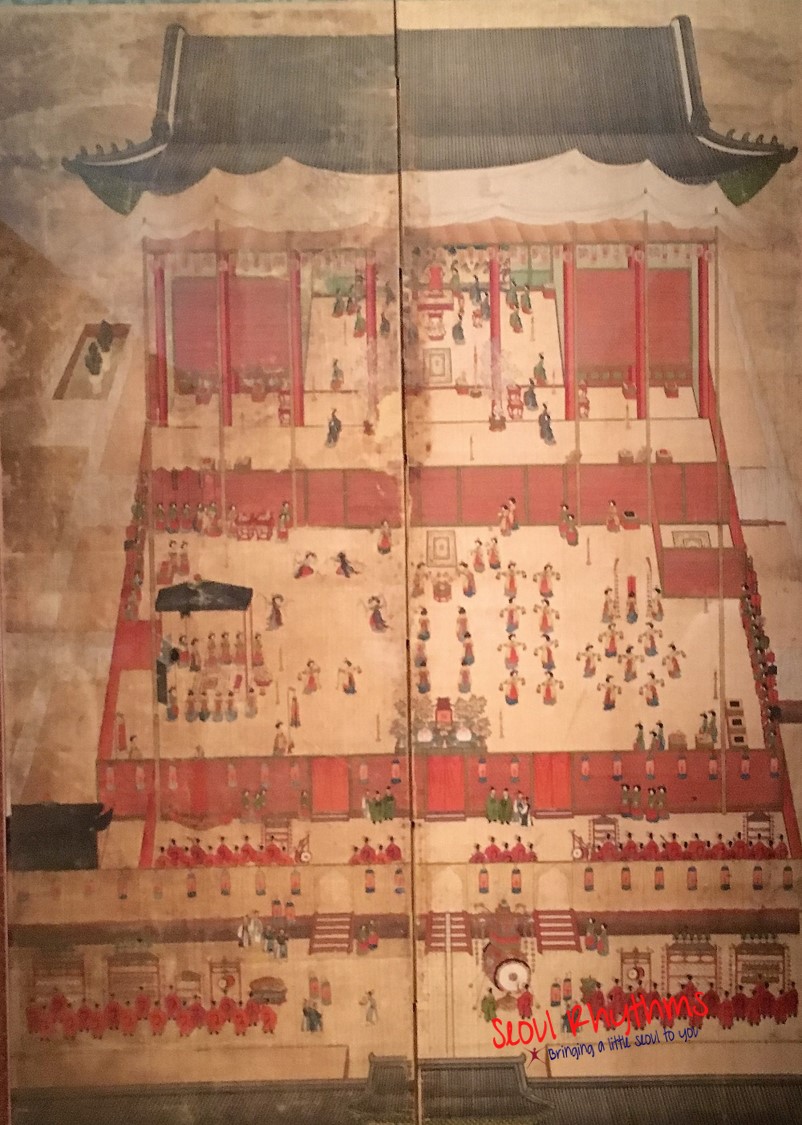
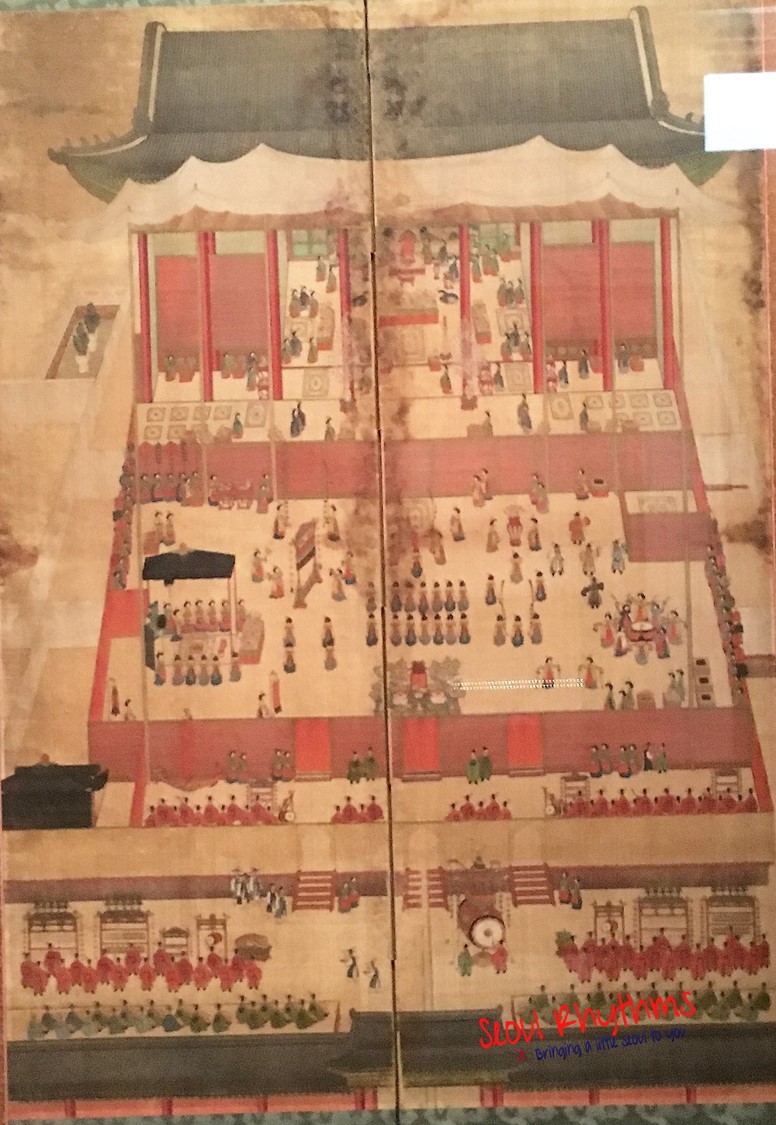
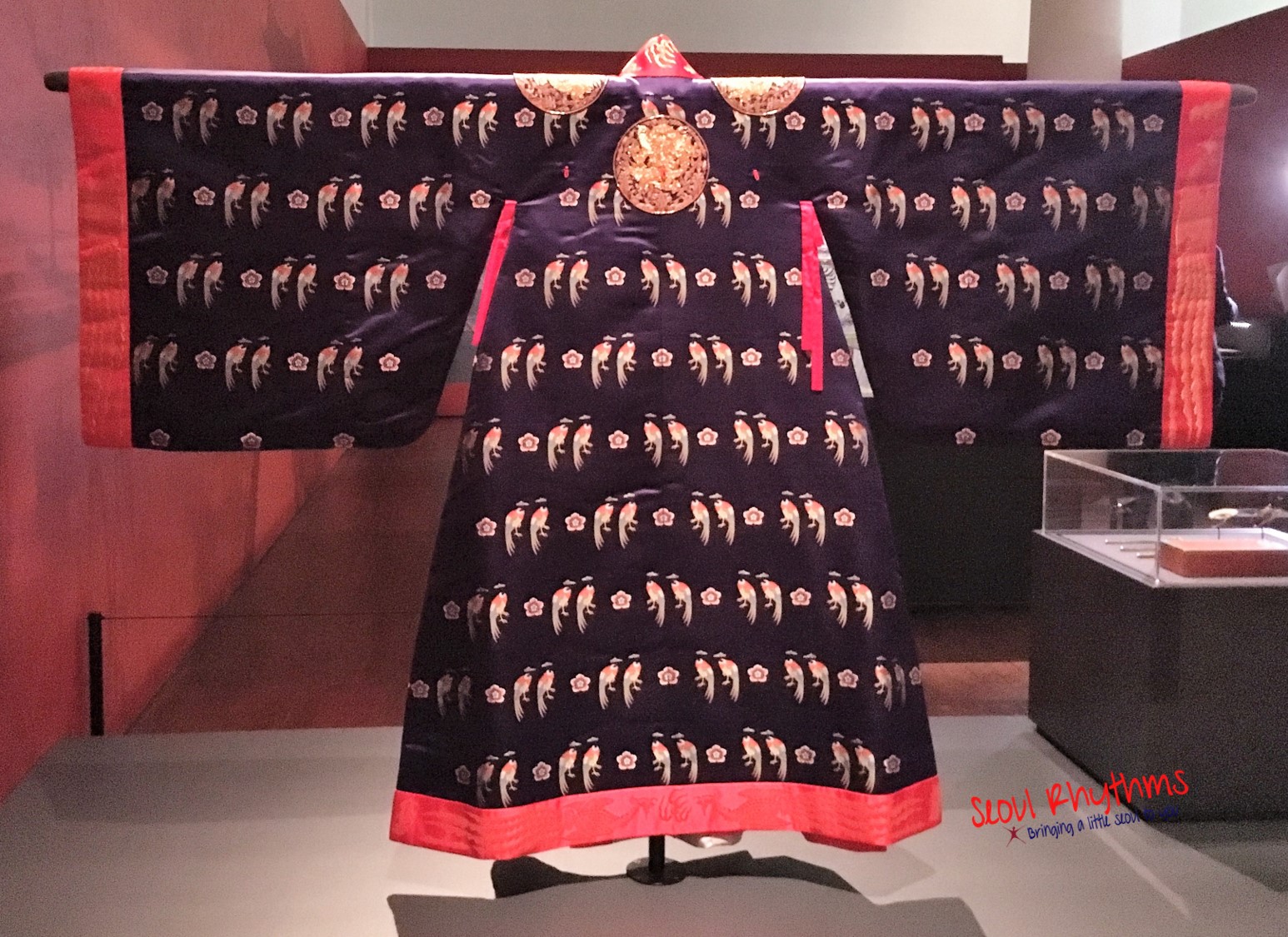
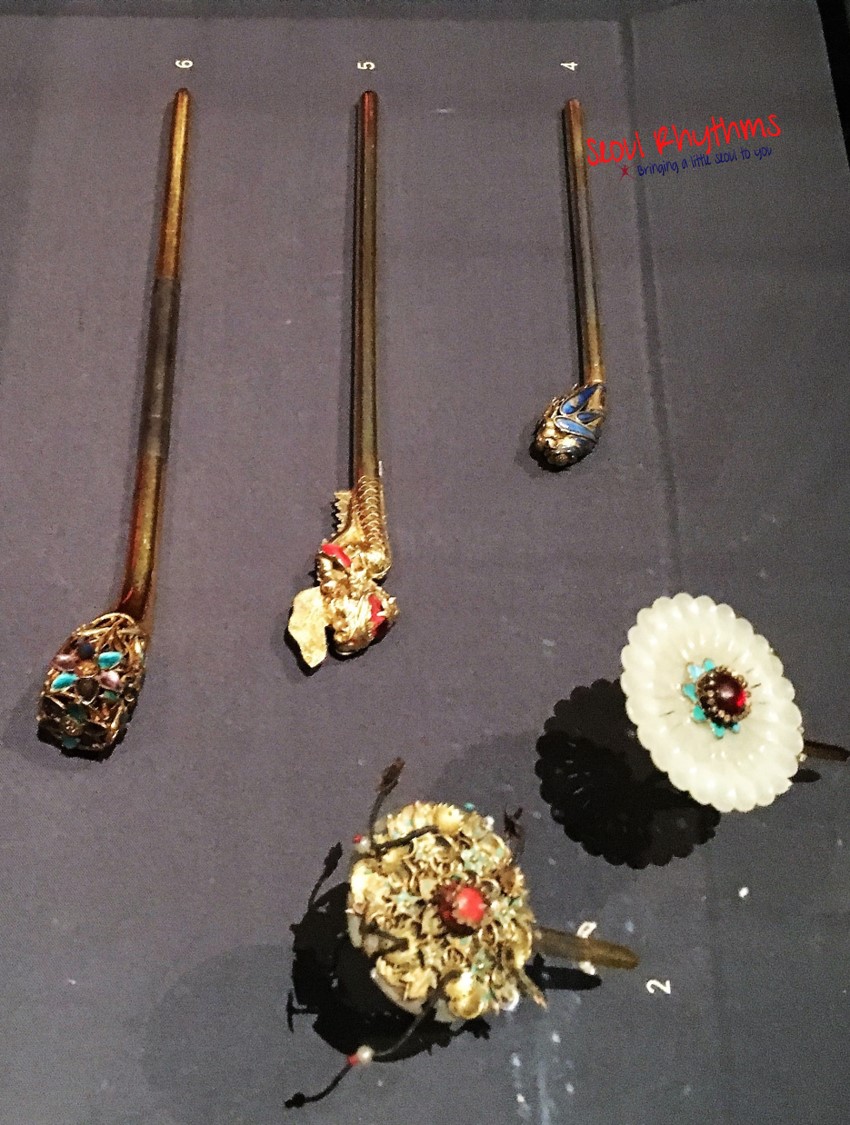
Do they look like the attire worn by Yoo In Na in ‘Queen In Hyun’s Man’.
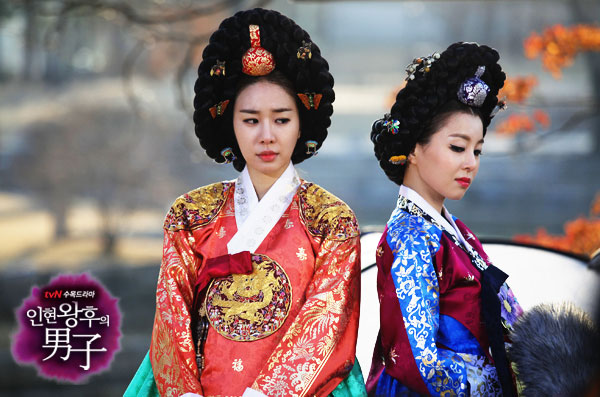
These are the typical furniture used during the Joseon period.

Fun fact: Do you know that men’s and women’s quarters were separated? Furnishing in the women’s quarters were more intricate whereas the men’s furniture were clean line.
Ordinary household wares. Just like the Chinese, they were full of fish motifs as they symbolize abundance.
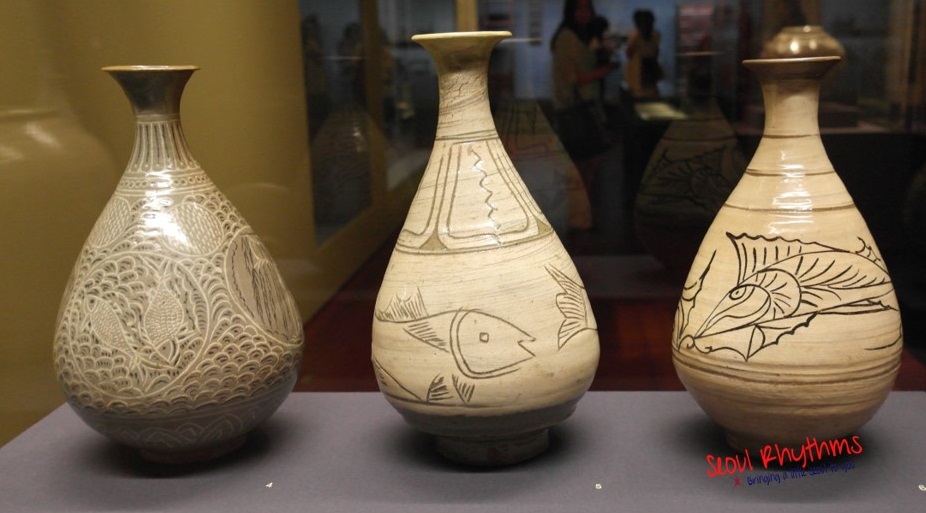
Richly detailed bridal robe. It’s a once in a lifetime opportunity to feel and dress like a queen. This desire applies today too.
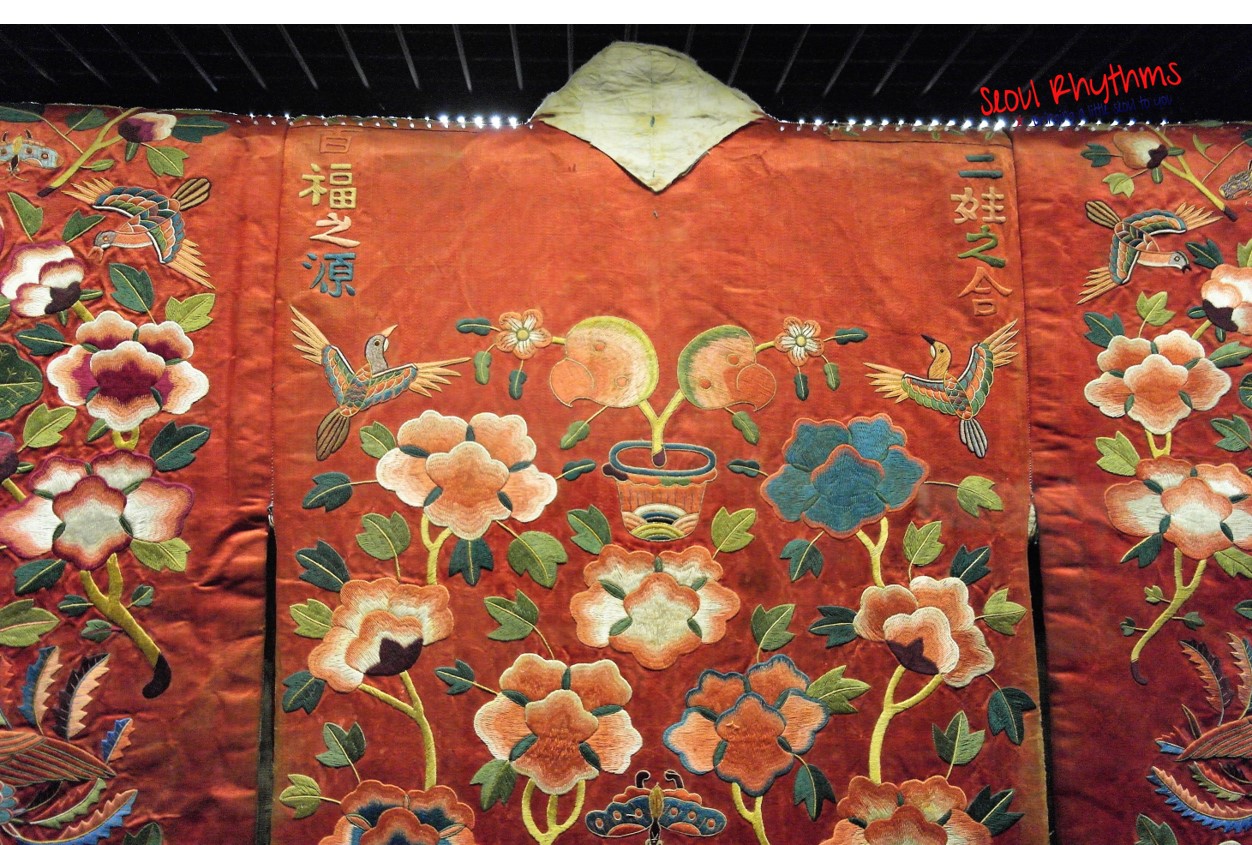
The norigae was attached to the ribbon of the short jacket worn by women or to the sash of their long skirts. Elaborate and colourful, the norigae is full of symbols (eg, butterfly symbolizes marital bliss) and depict the social status of the lady. .
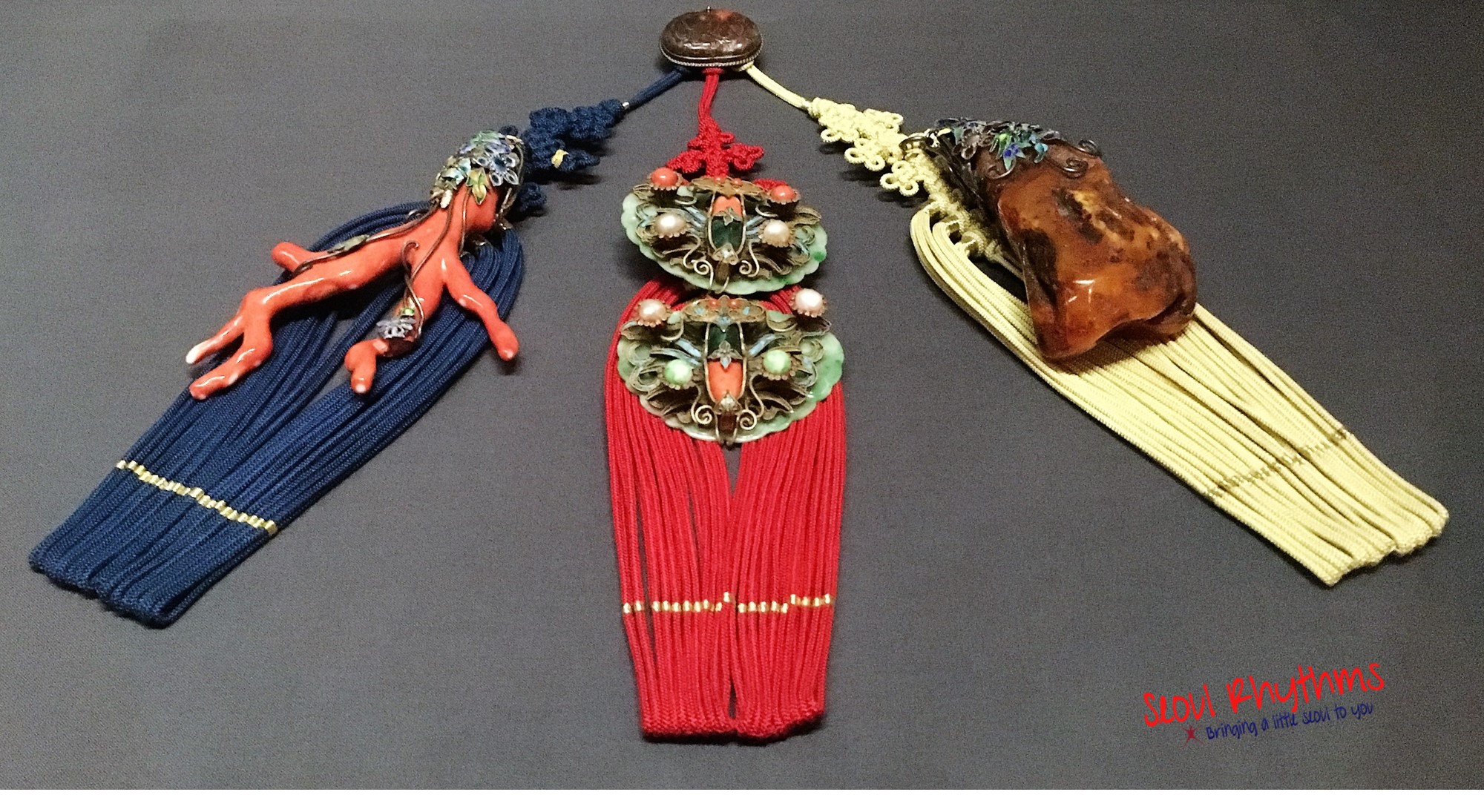
In conjunction with the exhibition, well known Korean artiste, Ran Hwang has put up her installation art that is a delight to the senses. Entitled ‘Becoming Again; Coming Together’, the installation features over amazing display of lights as well a pair of intricately hand sewn phoenix.
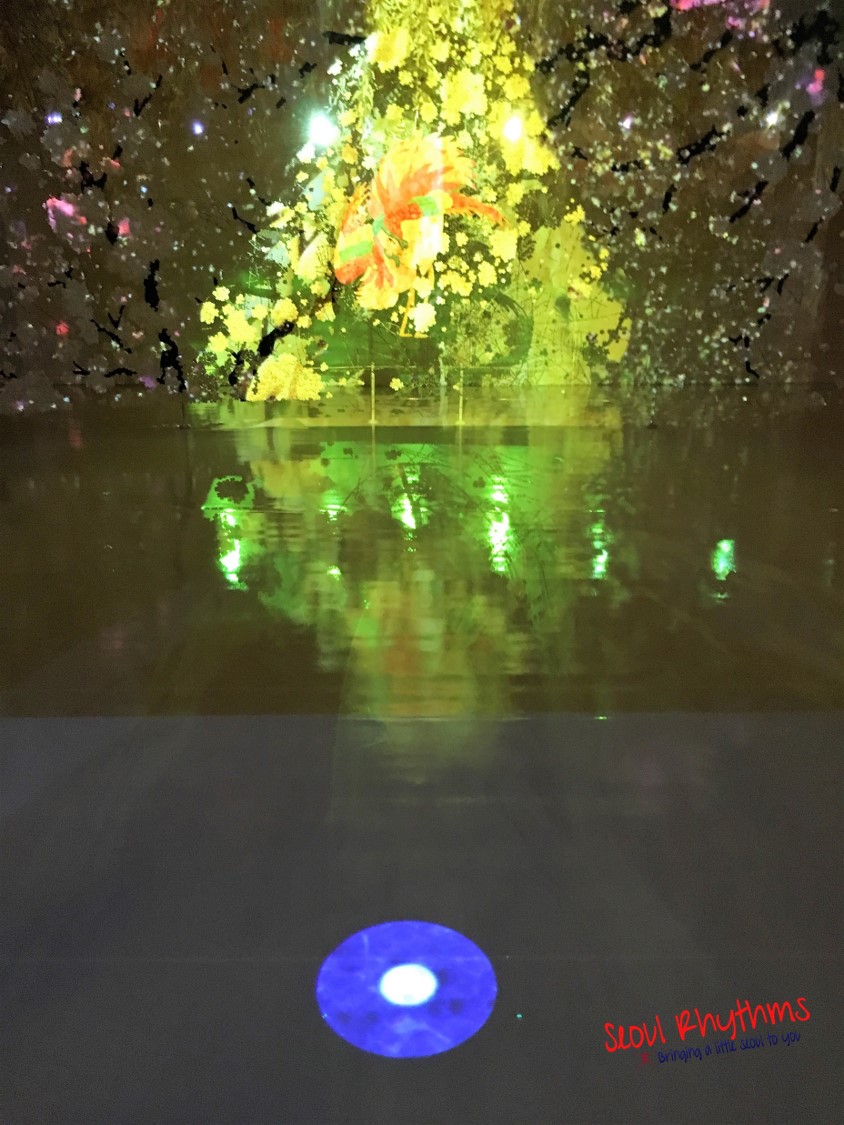
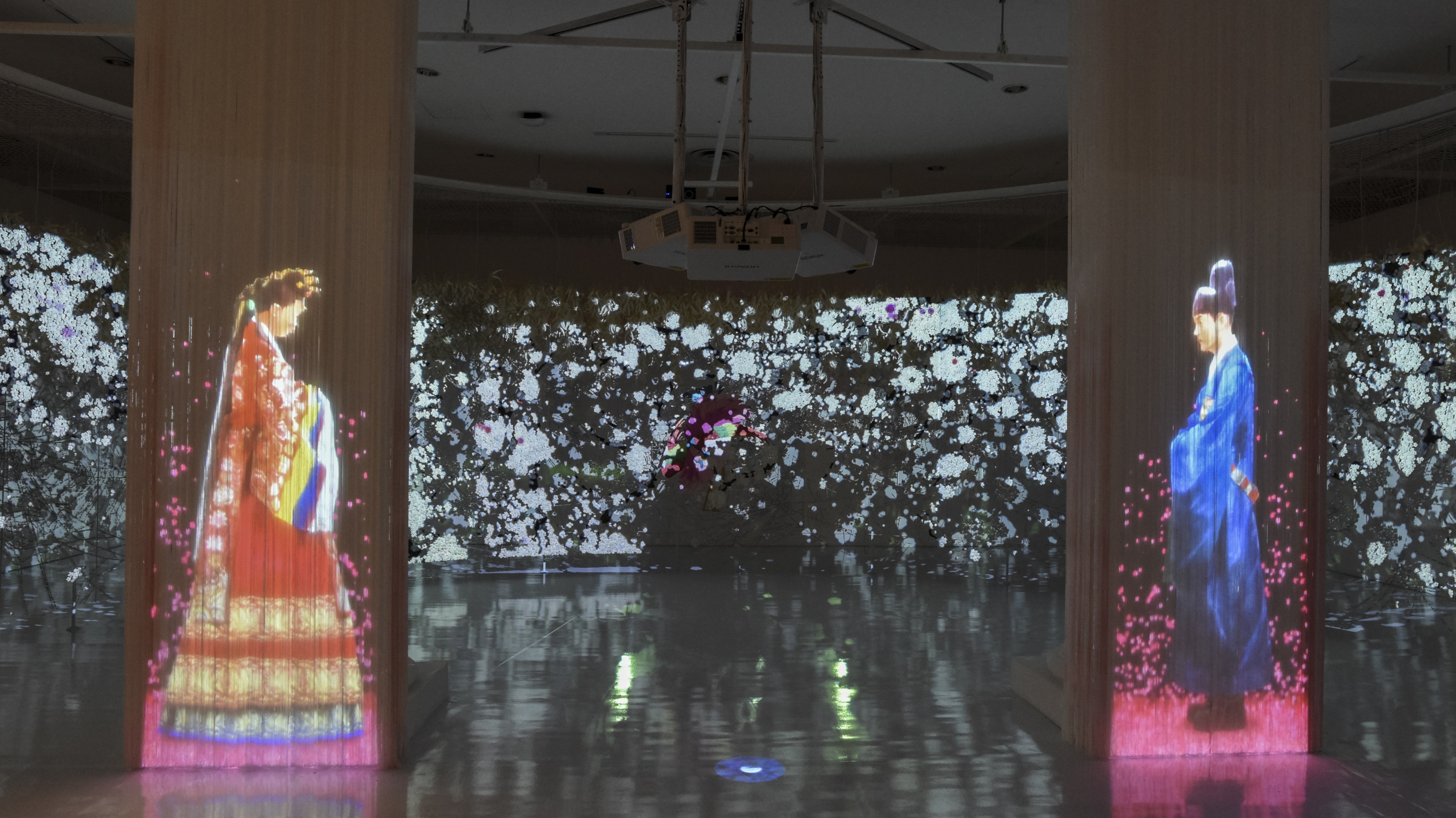 [Credit: Asian Civilisations Museum]
[Credit: Asian Civilisations Museum]
Joseon Korea: Court Treasure and City Life will be on display from 22 April to 23 July 2017.
Venue: Asian Civillisations Museum
Charges:
Singaporeans and PRs – $10 (free for children and senior)
Foreigners – $15
The installation art by Ran Hwang is free for all Singaporeans and PRs.
If you can, do go for the Curator Tours. It is really more informative than just reading from the little cards. It costs $25 per session and are only available on certain nights.
Curator Tours
Dates: 12 May, 9 June, 14 July
Time: 7.30pm to 8.30pm
Fun-tastic Friday
Dates: 2,9,16,23 June
Time: 12 to 5pm
Free admission. Dress up in hanboks, attend workshops and watch cultural performances. There are also activities for the little ones, just in time for the June holidays. Lots of colouring and craft work.
Seoul Awesome Weekend Festival
Date: 17 and 18 June
Time: 1-9pm, 1-5pm
Free admission. Music and dance performances, food tasting, picnic on ACM green and a movie marathon.
For more photos, please refer to Seoul Rhythm’s FB here. Do check it out as there are more interesting photos.
With thanks to Asian Civilisations Museum for the opportunity to preview the informative and interesting exhibition.
Answer to the difference between the two paintings. The celebrations went on for days, from morning till night. One depicts daytime celebration, whereas the other was at night. To tell the difference, the painting with lanterns indicated night time.
Leave a Reply